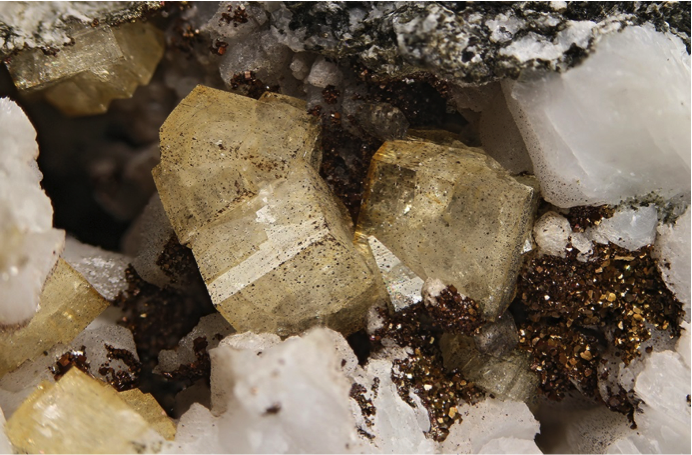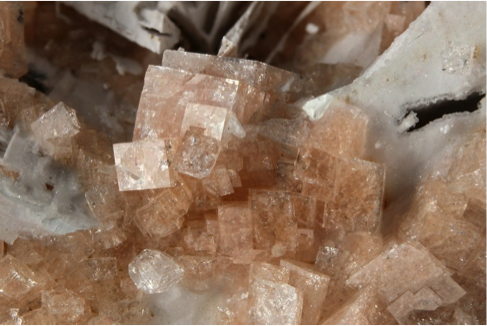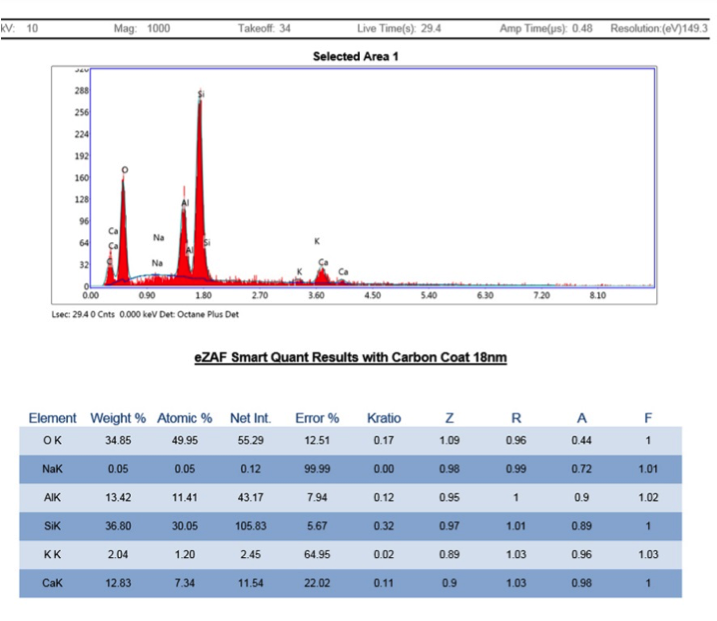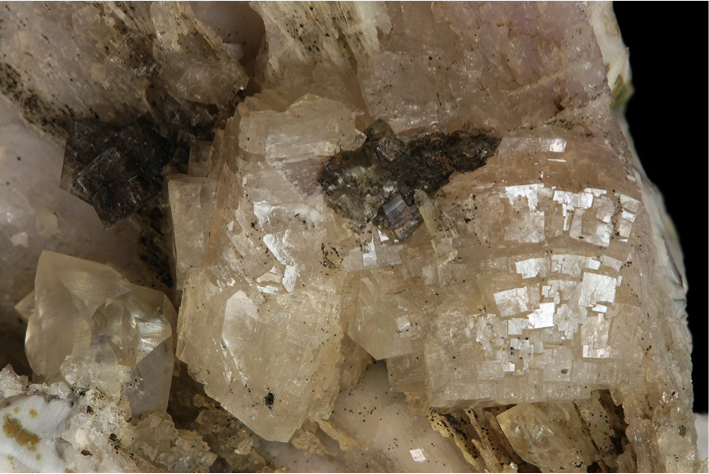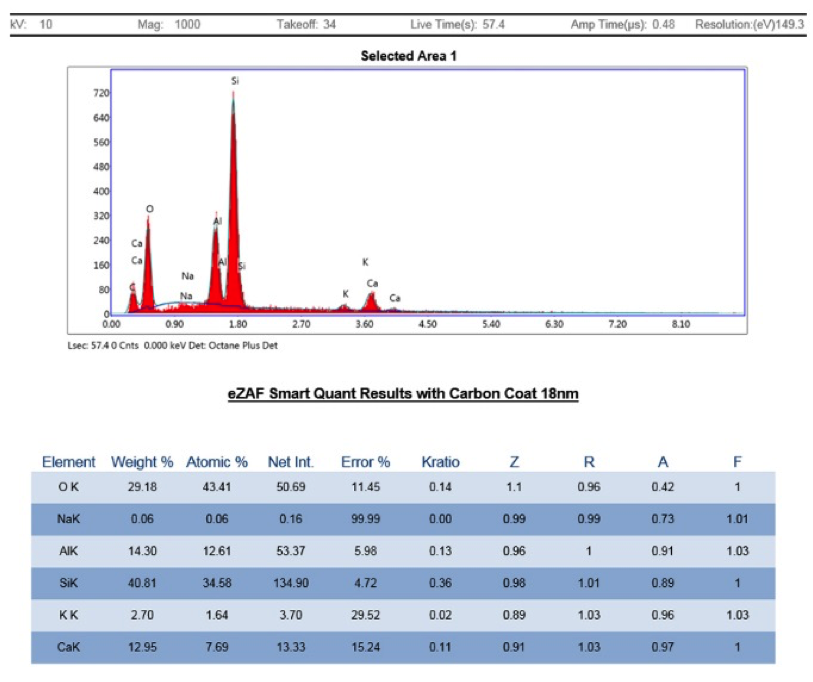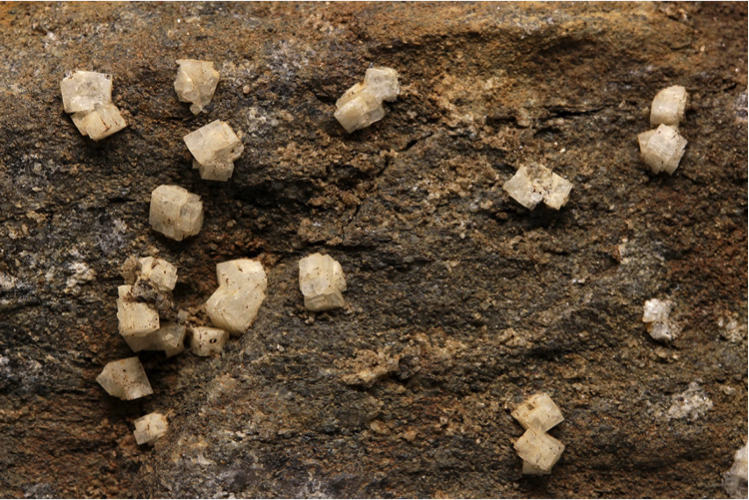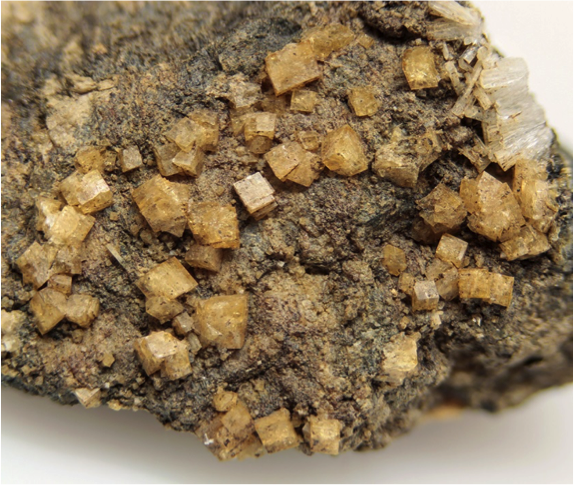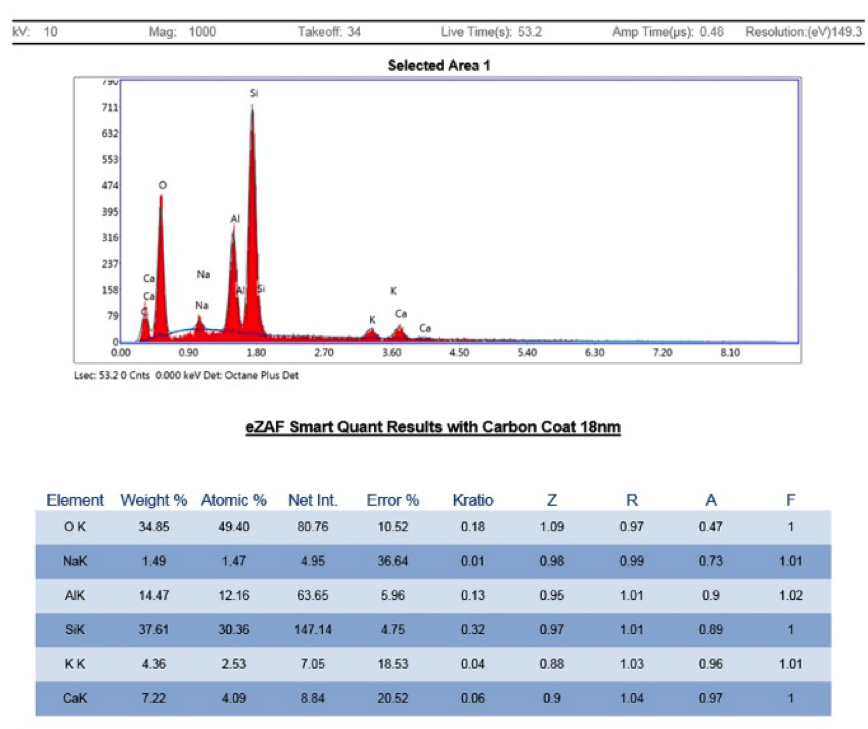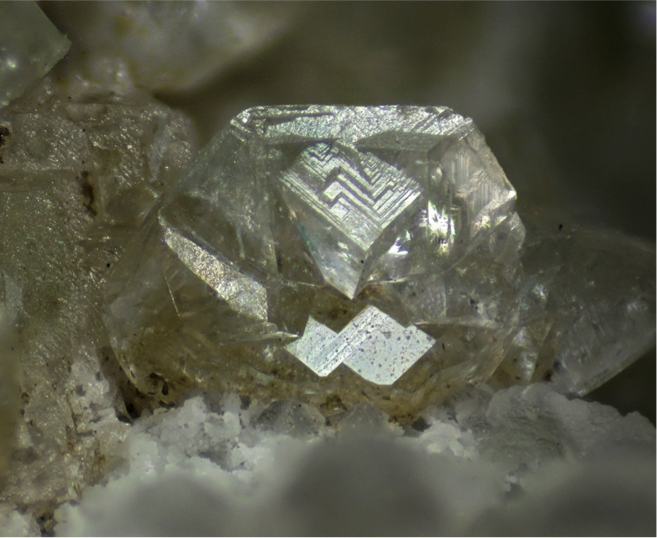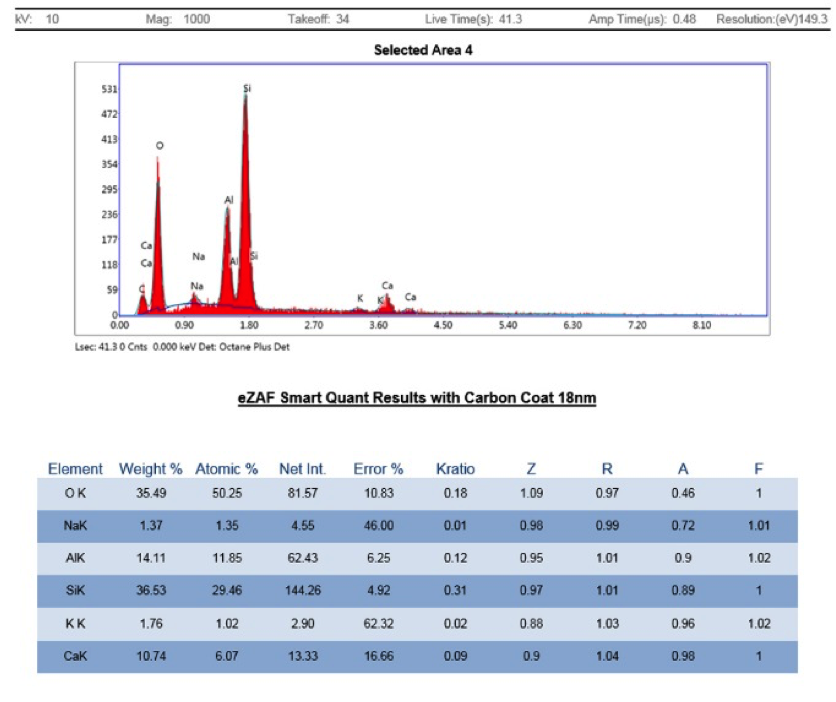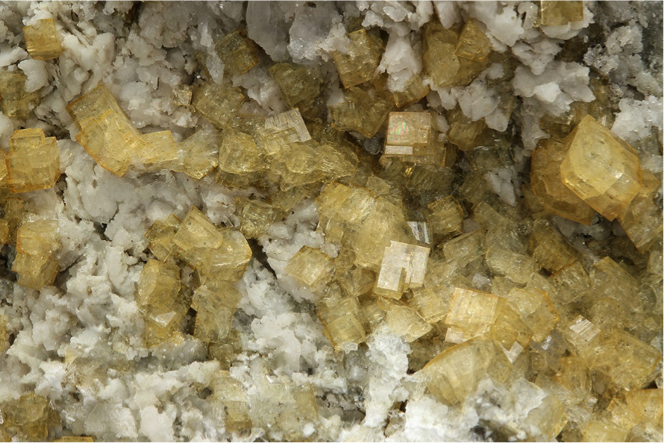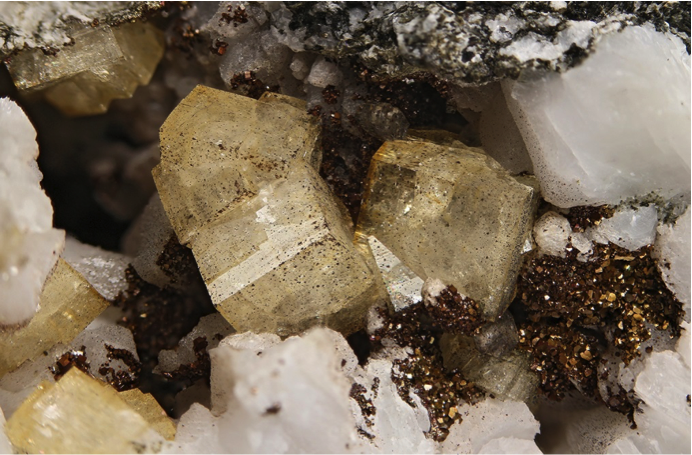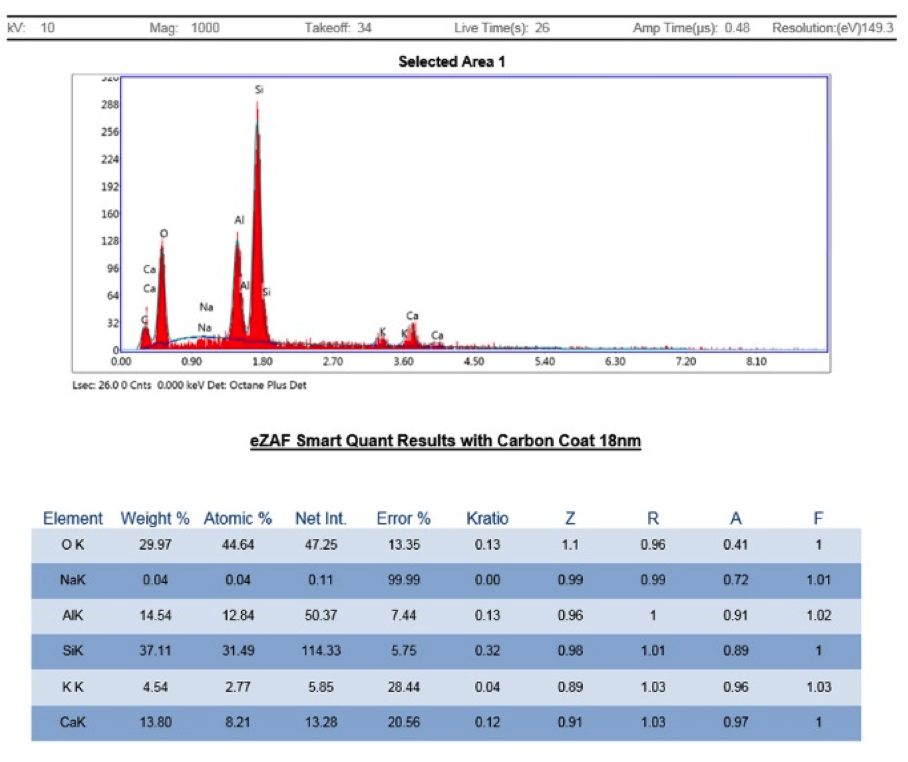The goals of this project were to better determine the particular species of chabazite on the specific samples and from that information hopefully extend the species identifications to unanalyzed specimens from the same localities, and perhaps throughout the state. Consequently, at least one sample was selected from most known localities with 2 samples submitted from the very prolific O&G locality.
Below is a table of the samples (most from my collection except MP03) followed by a discussion of the results.
Chabazite can also rarely occur in fractures in metamorphic rocks with other zeolite minerals, typically stilbite. Several places have yielded many crystals, particularly the old Route 6 bypass in Newtown that became part of I-84, at road cuts in Harwinton and Watertown, and at outcrops at the Tailwaggers, Inc. property in Litchfield.
All of the SEM-EDS results shown below found the chabazite-Ca species, with K and Na also detected in most, but not enough to change the species. Interestingly, the specimens from trap rock geo-environments (313, 1403, 1873) included, according to the SEM-EDS operator Peter Cristofono, “minor K, and trace Na” while those from fractures in metamorphic rocks included “significant K, and minor Na” or Mg (1774, 1871, 2526, MP03). The latter tend to have a yellow-orange color, probably from a tiny amount of Fe, too low to show up in the EDS spectra. Thus there is some apparently consistent minor difference in the mineral’s chemistry between these two geo-environments. In any case, I think it is reasonable to conclude that any chabazite found elsewhere in the state should belong to the chabazite-Ca species, unless it is identified at a new locality that has a very different mineral-forming geo-environment than the ones above. In that case, a full analysis should be done.
Specimen 313
Rhombohedral chabazite-Ca crystals on quartz filling in gaps between dissolved tabular anhydrite molds.
Specimen 1774
Chabazite-Ca crystals on a fracture surface in schist, very surprisingly these crystals fluorescence green under short-wave ultraviolet light.
Specimen 1871
Yellow-orange chabazite-Ca and white stilbite (upper right edge) crystals in a fracture in amphibolite.
Specimen 1875
Complex, multiple interpenetration twinned chabazite crystal on calcite, typical of the one from the same piece used for the analysis. All of them are microscopic.
Specimen 2526
Yellow-orange rhombohedral chabazite-Ca crystals with white calcite on annite gneiss.
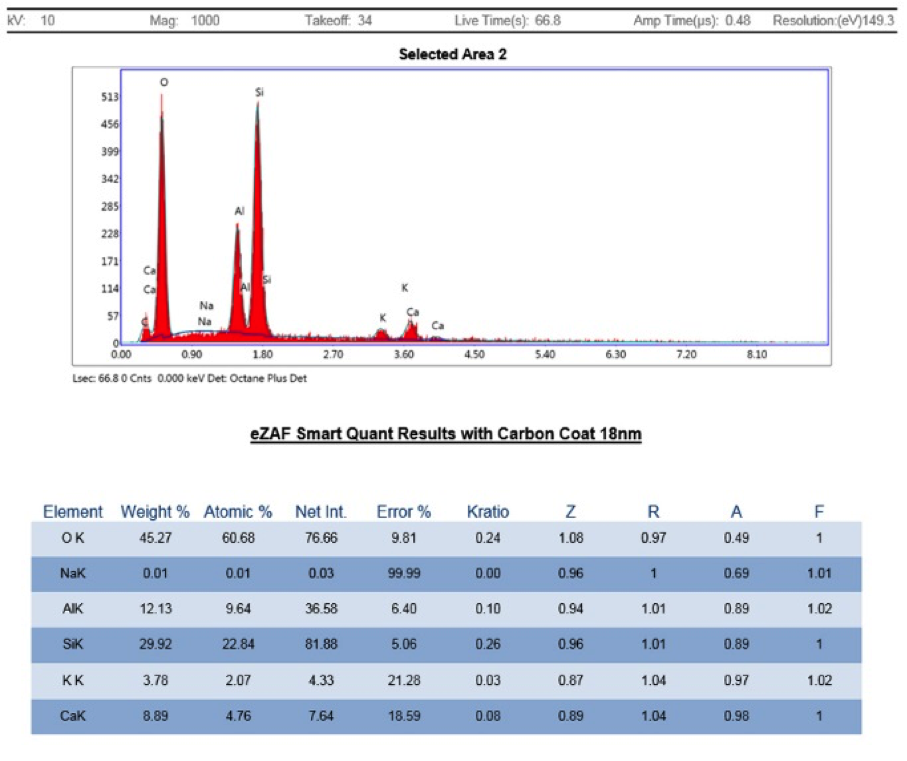
Yellow-orange chabazite-Ca with pyrite and white calcite in a fracture in granofels.

